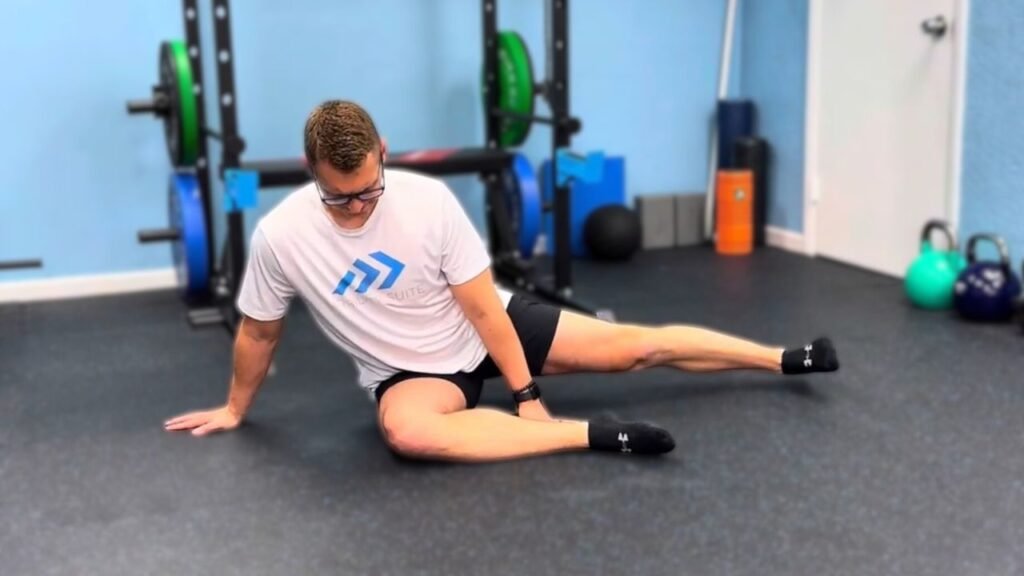
3 SIGNS You Need to Train Your Mobility – Mobility Suite
- Dr. Mitch Israel
- Mobility, Movement & Pain, Posture, Stretching

3 Signs You Need to Start Mobility Training Today
Are you neglecting a critical component of your fitness routine that could enhance your overall health? The answer lies in mobility training, a vital yet often underestimated practice that plays a crucial role in maintaining long-term physical well-being. While many individuals prioritize strength, endurance, and flexibility, they often overlook the significance of joint mobility. Research shows that enhancing your mobility can lead to better performance in physical activities and a decreased risk of musculoskeletal injuries. Mobility involves not just flexibility, but also the ability of your muscles and joints to move efficiently through their full range of motion.
In this article, we’ll explore the top three signs you need to start joint mobility training right away. If any of these signs resonate with you, it’s time to incorporate joint mobility exercises into your fitness routine to ensure your joints stay healthy, pain-free, and functional for years to come.
If you prefer videos, watch the video version below!
1. You Wake Up with Morning Joint Stiffness
One of the clearest indicators that your body is crying out for mobility training is waking up with stiff joints. Morning joint stiffness, especially in areas like the lower back or hips, is a common complaint among adults. While some stiffness upon waking can be normal, persistent or worsening stiffness is a sign that your joints lack adequate mobility.
As we age, the body’s synovial fluid, which lubricates the joints, decreases. This fluid is essential for joint movement, acting as a cushion and reducing friction between bones. Reduced synovial fluid can lead to stiffness, decreased range of motion, and discomfort in the morning. Studies have shown that morning joint stiffness can be associated with reduced joint flexibility and the onset of conditions such as osteoarthritis.

Mobility training helps to counter this by encouraging fluid circulation and improving joint flexibility. Regularly performing mobility exercises that focus on improving movement quality and joint health can reduce morning joint stiffness over time. Simple movements like controlled joint rotations, stretching, and targeted mobility drills can help maintain healthy joint function.
If you find yourself feeling stiff every morning, especially in key areas like the lower back, hips, or shoulders, it’s time to introduce joint mobility training into your routine. Without intervention, this stiffness can progress, eventually leading to more serious issues like chronic pain or joint degeneration. Daily mobility work helps lubricate the joints, increase blood flow, and keep your body moving freely.
2. You Sit for Long Periods Throughout the Day
Another clear sign that joint mobility training is essential for you is if you spend long periods sitting, whether at a desk job, during long commutes, or simply from a sedentary lifestyle. Sitting for extended periods can improve your posture and mobility. While sitting is a natural posture, the problem arises from the amount of time we spend in this position daily.

Sitting for hours on end contributes to a condition called “adaptive shortening,” where the muscles in your hips, lower back, and shoulders become tight and weak. Over time, this can cause pain and discomfort in the neck, shoulders, and lower back, along with poor posture, limited hip mobility, and even the dreaded “desk worker’s hump”—a forward head posture that becomes more pronounced with age.
When you sit for long periods, the hip flexors and hamstrings shorten, while the glutes and lower back muscles weaken. This imbalance can lead to poor movement patterns, reduced range of motion, and a higher risk of injury during physical activities. Studies have found that prolonged sitting increases the risk of musculoskeletal disorders.
Joint mobility training combats the negative effects of prolonged sitting by stretching tight muscles, strengthening weak areas, and improving overall movement patterns. Focusing on exercises that target the hips, thoracic spine, and shoulders can dramatically improve your posture and counteract the imbalances caused by sitting.
If you’re spending the majority of your day in a seated position, mobility training is crucial to maintaining joint health and avoiding the long-term negative effects of a sedentary lifestyle. Simple, daily mobility drills can help open up tight areas, restore proper posture, and alleviate discomfort caused by excessive sitting.
3. You’re Over the Age of 30
As we age, the body naturally begins to lose flexibility, and our joints become more vulnerable to wear and tear. By the time we hit our 30s, joint health starts to decline, and the cumulative effects of years of poor movement patterns, imbalances, and lack of mobility begin to manifest. If you’re over 30 and haven’t been focusing on mobility, now is the time to start.

Also, as we get older, collagen production decreases, affecting the elasticity of muscles, tendons, and ligaments. This reduced elasticity can lead to a loss of flexibility and mobility, which, if left unaddressed, can result in joint pain, stiffness, and an increased risk of injury. Research also shows that aging leads to changes in cartilage, which reduces shock absorption in the joints and increases the risk of osteoarthritis and other degenerative conditions.
Joint mobility training helps to slow down this aging process by maintaining and improving joint flexibility, strength, and range of motion. Incorporating mobility exercises into your fitness routine can also prevent age-related issues like chronic knee pain, hip replacements, and lower back pain. By improving the health of your joints now, you can enjoy an active, pain-free lifestyle well into your later years.
If you’re noticing signs of joint discomfort or reduced flexibility as you age, mobility training can help reverse these effects and protect your joints from further decline. The earlier you start, the better your chances of preserving your joint health as you get older.
Why Mobility Training is Essential for Everyone
Joint mobility training is not just for athletes or people recovering from injuries—it’s essential for everyone. Whether you’re an office worker, a weekend warrior, or someone noticing the effects of aging, mobility exercises should be part of your daily routine. Mobility training helps improving joint flexibility, improve your posture, prevent injuries, and enhance movement quality, allowing you to move better and live pain-free.
Start Your Mobility Journey with the Mobility Suite Membership
If any of these signs resonate with you, it’s time to take action and embrace a mobility training routine! The Mobility Suite App is here to support you on your journey to better movement and overall well-being. With our platform, you’ll find daily mobility routines, premium programs, and unique workouts that blend mobility with strength training, helping you feel more comfortable and capable in your body.
Join us to tackle those tight joints, enhance your flexibility, and protect yourself from age-related challenges. Whether you’re just starting or looking to elevate your current routine, we’ve got the resources to keep you active, healthy, and pain-free.
Don’t let discomfort hold you back any longer—start your joint mobility training with the Mobility Suite today, and take charge of your movement and health! You deserve to feel your best!
References
- Aliprandi, V., et al. (2019). “Synovial Fluid Physiology and the Role of Lubrication in Joint Health.” Journal of Rheumatology.
- Jordan, K. M., et al. (2003). “Prolonged Sitting and the Risk of Musculoskeletal Disorders.” Ergonomics Journal.
- Anderson, R. C. (2020). “Aging and Joint Health: The Effects of Decreased Collagen Production.” Journal of Geriatric Medicine.




